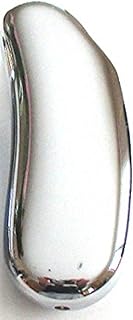BIC Lighter Manufacturing: A Look Inside the Production Process
The iconic BIC lighter, ubiquitous across the globe, is a marvel of simple design and efficient manufacturing. Here's a glimpse into the production process, from raw materials to the finished product:
1. Raw Material Acquisition:
* Plastic: BIC uses polypropylene (PP) plastic for the lighter's body and other components. This material is durable, lightweight, and cost-effective.
* Flint: High-quality flint stones are sourced to create the spark. These are typically made from ferrocerium, an alloy of iron and cerium.
* Butane: This flammable gas provides fuel for the lighter. BIC sources high-purity butane, ensuring consistent performance and safety.
* Metal Components: Steel and brass are used for the lighter's internal mechanisms, including the spark wheel, valve, and fuel reservoir.
2. Component Production:
* Plastic Molding: Plastic granules are melted and injected into molds to create the lighter body, cap, and other components. This process is highly automated, producing large volumes of consistent parts.
* Metal Stamping: Steel and brass sheets are stamped into precise shapes using specialized dies. This process creates the internal components of the lighter.
* Flint Production: Flint stones are cut and shaped to fit within the lighter's mechanism.
3. Assembly:
* Automatic Assembly: Robot arms precisely assemble the lighter components, ensuring consistent quality and speed. The flint, spark wheel, valve, and fuel reservoir are meticulously placed within the plastic body.
* Butane Filling: Lighter shells are filled with butane gas through a controlled process. This step requires strict safety measures to prevent leaks and explosions.
* Quality Control: Throughout the assembly process, rigorous quality control checks are performed at various stages to ensure functionality, safety, and adherence to specifications.
4. Packaging and Distribution:
* Packaging: Finished lighters are packaged in individual blister packs or larger multi-packs for retail distribution.
* Distribution: BIC lighters are shipped worldwide through a vast network of wholesalers and retailers.
Key Features of BIC Lighter Manufacturing:
* Automation: BIC relies heavily on automated processes throughout production, ensuring high efficiency and consistent quality.
* Standardization: The design and manufacturing of BIC lighters are tightly controlled, resulting in a highly uniform product.
* Cost-effectiveness: BIC's manufacturing process is optimized for efficiency, resulting in a low-cost product that is accessible to consumers globally.
* Safety: BIC prioritizes safety in its manufacturing processes and final product, adhering to stringent regulations and quality standards.
Sustainability Initiatives:
BIC is committed to sustainable practices in its operations. This includes using recycled materials in its packaging, reducing energy consumption through process optimization, and sourcing raw materials responsibly.
In Conclusion:
The BIC lighter's production process is a remarkable example of efficient manufacturing. It combines automation, standardization, and cost-effectiveness to deliver a reliable and affordable product globally. With a focus on safety and sustainability, BIC continues to innovate and refine its processes to meet the evolving demands of the market.


